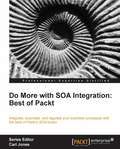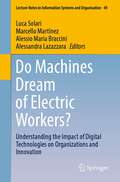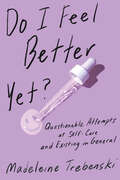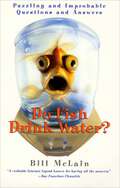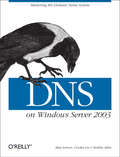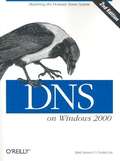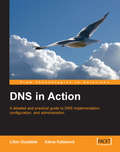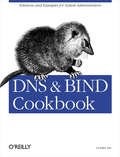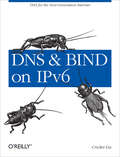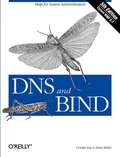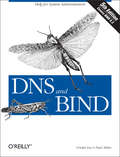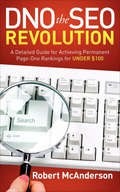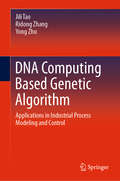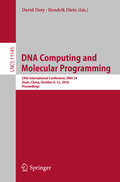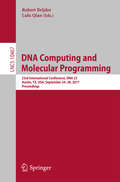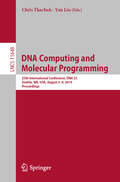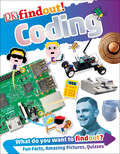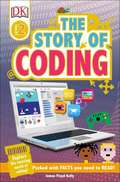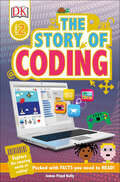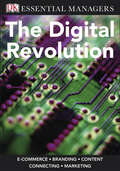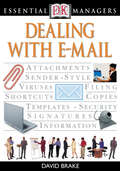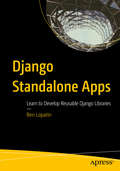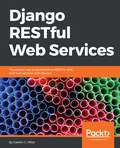- Table View
- List View
Do more with SOA Integration: Best of Packt
by Arun PoduvalService Oriented Architecture (SOA) remains a buzzword in the business and IT community, largely because the ability to react quickly is of utmost importance. SOA can be the key solution to this. The challenge lies in the tricky task of integrating all the applications in a business through a Service Oriented Architecture, and "Do more with SOA Integration: Best of Packt" will help you do just that with content from a total of eight separate Packt books. "Do more with SOA Integration: Best of Packt" will help you learn SOA integration from scratch. It will help you demystify the concept of SOA integration, understand basic integration technologies and best practices, and get started with SOA Governance. "Do more with SOA Integration: Best of Packt" draws from eight separate titles from Packt's existing collection of excellent SOA books: BPEL cookbook , SOA Approach to Integration, Service Oriented Architecture: An Integration Blueprint, Building SOA-Based Composite Applications Using NetBeans IDE, Oracle SOA Suite Developer's Guide, WS-BPEL 2.0 for SOA Composite Applications with Oracle SOA Suite 11g, Oracle Modernization Solutions, SOA Governance. The chapters in "Do more with SOA Integration: Best of Packt" help you to learn from the best SOA integration content in no less than eight separate Packt books. The book begins with a refresher of SOA and the various types of integration available, and then delves deeper into integration best practices with XML, binding components and web services from Packt books like "Oracle SOA Suite Developer's Guide " and "BPEL Cookbook". Along the way you'll also learn from a number of real world scenarios. By the end of "Do more with SOA Integration: Best of Packt" you will be equipped with knowledge from a wide variety of Packt books and will have learnt from a range of practical approaches to really get to grips with SOA integration.
Do Machines Dream of Electric Workers?: Understanding the Impact of Digital Technologies on Organizations and Innovation (Lecture Notes in Information Systems and Organisation #49)
by Luca Solari Marcello Martinez Alessio Maria Braccini Alessandra LazazzaraIn our rapidly changing world, digitalization is often either the key to survival or the driving force behind organizations' success. This book examines the impact of digitalization on organizations and the challenges it poses. It explores ways of redesigning work, improving organizational performance, developing employee skills, and creating new forms of competition in the market. In this context, not only the challenges for organizations but also those for the field of organizational studies are considered.This compilation is based on a selection of the best papers presented at the annual workshop (WOA2020) of the Association of Italian Organization Studies Academics (ASSIOA), held at the University of Milan, Italy in February 2020. The diverse road range of perspectives offered makes the book relevant for scholars and practitioners alike.
Do I Feel Better Yet?: Questionable Attempts at Self-Care and Existing in General
by Madeleine TrebenskiIf you've ever dared to express dissatisfaction with the state of your life, you've inevitably received a variety of helpful suggestions: "Have you tried meditation? Exercise? A cult? An exercise cult?" In Do I Feel Better Yet?, Madeleine Trebenski explores more than 45 so-called solutions suggested to her in the name of self-care. In a playful and at times sardonic chronicle of the elusive promises of multistep skin-care routines, gratitude journaling, scented candles, and more, Trebenski perfectly captures what it's like to live in a time when homemade kombucha and weighted blankets are said to single-handedly solve all our problems. These essays will make you laugh, make you feel less alone, and maybe make you feel better—even if just for a little while.
Do Fish Drink Water?: Puzzling and Improbable Questions and Answers
by Bill McLainIs it true that elephants are afraid of mice?How much gold does the United States store in Fort Knox?Why do I get a headache when I eat ice cream too fast?How did the "seventh inning stretch" originate?As the official webmaster for Xerox, Bill McLain was surprised by the kinds of questions he was receiving, like whether people born blind can see in their dreams and why rabbits are associated with Easter. McLain began to answer each and every question--attracting national attention from MSNBC, CNN, and People--and the result, collected in Do Fish Drink Water?, is a surprising, funny, and informative collection of facts. McLain's answers can often be as wild as the questions and prompt entertaining anecdotes about where he found them. McLain explains how magnets are made, what caused the Great Depression of 1922, and even explains why cats purr. Also included is an extensive list of websites where he conducts research, offering an informative guide to making the most of the Internet.
DNS on Windows Server 2003
by Matt Larson Cricket Liu Robbie AllenWhile computers and other devices identify each other on networks or the Internet by using unique addresses made up of numbers, humans rely on the Domain Name System (DNS), the distributed database that allows us to identify machines by name. DNS does the work of translating domain names into numerical IP addresses, routing mail to its proper destination, and many other services, so that users require little or no knowledge of the system. If you're a network or system administrator, however, configuring, implementing, and maintaining DNS zones can be a formidable challenge. And now, with Windows Server 2003, an understanding of the workings of DNS is even more critical.DNS on Windows Server 20003 is a special Windows-oriented edition of the classic DNS and BIND, updated to document the many changes to DNS, large and small, found in Windows Server 2003. Veteran O'Reilly authors, Cricket Liu, Matt Larson, and Robbie Allen explain the whole system in terms of the new Windows Server 2003, from starting and stopping a DNS service to establishing an organization's namespace in the global hierarchy. Besides covering general issues like installing, setting up, and maintaining the server, DNS on Windows Server 2003 tackles the many issues specific to the new Windows environment, including the use of the dnscmd program to manage the Microsoft DNS Server from the command line and development using the WMI DNS provider to manage the name server programmatically. The book also documents new features of the Microsoft DNS Server in Windows Server 2003, including conditional forwarding and zone storage in Active Directory (AD) application partitions.DNS on Windows Server 2003 provides grounding in:Security issues System tuning Caching Zone change notification Troubleshooting Planning for growth If you're a Windows administrator, DNS on Windows Server 2003 is the operations manual you need for working with DNS every day. If you're a Windows user who simply wants to take the mystery out of the Internet, this book is a readable introduction to the Internet's architecture and inner workings.
DNS on Windows 2000, 2nd Edition
by Matt Larson Cricket LiuDNS on Windows 2000 is a special Windows-oriented edition of the classic DNS and BIND. The Domain Name System (DNS) is one of the Internet's fundamental building blocks: the distributed host information database that's responsible for translating names into addresses, routing mail to its proper destination, and many other services. As the preface says, if you're using the Internet, you're already using DNS--even if you don't know it. Besides covering general issues like installing, setting up, and maintaining the server, DNS on Windows 2000 tackles those specific to the Windows environment: integration between DNS and Active Directory, conversion from BIND to the Microsoft DNS server, and registry settings. You'll also acquire a grounding in: Security issues System tuning Caching Zone change notification Troubleshooting Planning for growth What DNS does, how it works, and when you need to use it How to find your own place in the Internet's namespace Setting up name servers Integrating Active Directory with DNS Dynamic updates, storing zone information in Active Directory, and incremental zone transfers Using MX records to route mail Configuring hosts to use name servers Subdividing domains (parenting) Securing your name server: preventing unauthorized zone transfers Mapping one name to several servers for load sharing Troubleshooting: using nslookup, diagnosing common problems If you're a Windows administrator, DNS on Windows 2000 is the operations manual you need for working with DNS every day; if you're a Windows user who simply wants to take the mystery out of the Internet, this book is a readable introduction to the Internet's architecture and inner workings. Topics include:
DNS in Action
by Libor Dostálek Alena KabelováThis book is for system administrators and network architects who need to learn how to run and configure DNS servers. A working knowledge of TCP/IP protocols is presumed.
DNS & Bind Cookbook
by Cricket LiuThe DNS & BIND Cookbook presents solutions to the many problems faced by network administrators responsible for a name server. Following O'Reilly's popular problem-and-solution cookbook format, this title is an indispensable companion to DNS & BIND, 4th Edition, the definitive guide to the critical task of name server administration. The cookbook contains dozens of code recipes showing solutions to everyday problems, ranging from simple questions, like, "How do I get BIND?" to more advanced topics like providing name service for IPv6 addresses. It's full of BIND configuration files that you can adapt to your sites requirements. With the wide range of recipes in this book, you'll be able toCheck whether a name is registered Register your domain name and name servers Create zone files for your domains Protect your name server from abuse Set up back-up mail servers and virtual email addresses Delegate subdomains and check delegation Use incremental transfer Secure zone transfers Restrict which queries a server will answer Upgrade to BIND 9 from earlier version Perform logging and troubleshooting Use IPv6 and much more. These recipes encompass all the day-to-day tasks you're faced with when managing a name server, and many other tasks you'll face as your site grows. Written by Cricket Liu, a noted authority on DNS, and the author of the bestselling DNS & BIND and DNS on Windows 2000, the DNS & BIND Cookbook belongs in every system or network administrator's library.
DNS and BIND on IPv6: DNS for the Next-Generation Internet
by Cricket LiuIf you're preparing to roll out IPv6 on your network, this concise book provides the essentials you need to support this protocol with DNS. You'll learn how DNS was extended to accommodate IPv6 addresses, and how you can configure a BIND name server to run on the network. This book also features methods for troubleshooting problems with IPv6 forward- and reverse-mapping, and techniques for helping islands of IPv6 clients communicate with IPv4 resources. Topics include: DNS and IPv6--Learn the structure and representation of IPv6 addresses, and the syntaxes of AAAA and PTR records in the ip6.arpa IPv6 reverse-mapping zone BIND on IPv6--Use IPv6 addresses and networks in ACLs, and register and delegate to IPv6-speaking name servers Resolver Configuration--Configure popular stub resolvers (Linux/Unix, MacOS X, and Windows) to query IPv6-speaking name servers DNS64--Learn about the transition technology that allows clients with IPv6-only network stacks to communicate with IPv4 servers Troubleshooting--Use the nslookup and dig troubleshooting tools to look up the IPv6 addresses of a domain name, or reverse-map an IPv6 address to a domain name
DNS and BIND, 5th Edition
by Paul Albitz Cricket LiuDNS and BIND tells you everything you need to work with one of the Internet's fundamental building blocks: the distributed host information database that's responsible for translating names into addresses, routing mail to its proper destination, and even listing phone numbers with the new ENUM standard. This book brings you up-to-date with the latest changes in this crucial service. The fifth edition covers BIND 9.3.2, the most recent release of the BIND 9 series, as well as BIND 8.4.7. BIND 9.3.2 contains further improvements in security and IPv6 support, and important new features such as internationalized domain names, ENUM (electronic numbering), and SPF (the Sender Policy Framework). Whether you're an administrator involved with DNS on a daily basis or a user who wants to be more informed about the Internet and how it works, you'll find that this book is essential reading. What DNS does, how it works, and when you need to use it How to find your own place in the Internet's namespace Setting up name servers Using MX records to route mail Configuring hosts to use DNS name servers Subdividing domains (parenting) Securing your name server: restricting who can query your server, preventing unauthorized zone transfers, avoiding bogus servers, etc. The DNS Security Extensions (DNSSEC) and Transaction Signatures (TSIG) Mapping one name to several servers for load sharing Dynamic updates, asynchronous notification of change to a zone, and incremental zone transfers Troubleshooting: using nslookup and dig, reading debugging output, common problems DNS programming using the resolver library and Perl's Net::DNS module Topics include:
DNS and BIND, 4th Edition
by Paul Albitz Cricket LiuThe fourth edition of DNS and BIND covers the new 9.1.0 and 8.2.3 versions of BIND as well as the older 4.9 version. There's also more extensive coverage of NOTIFY, IPv6 forward and reverse mapping, transaction signatures, and the new DNS Security Extensions; and a section on accommodating Windows 2000 clients, servers and Domain Controllers.
DNS and BIND
by Paul Albitz Cricket LiuDNS and BIND tells you everything you need to work with one of the Internet's fundamental building blocks: the distributed host information database that's responsible for translating names into addresses, routing mail to its proper destination, and even listing phone numbers with the new ENUM standard. This book brings you up-to-date with the latest changes in this crucial service. The fifth edition covers BIND 9.3.2, the most recent release of the BIND 9 series, as well as BIND 8.4.7. BIND 9.3.2 contains further improvements in security and IPv6 support, and important new features such as internationalized domain names, ENUM (electronic numbering), and SPF (the Sender Policy Framework). Whether you're an administrator involved with DNS on a daily basis or a user who wants to be more informed about the Internet and how it works, you'll find that this book is essential reading. Topics include: What DNS does, how it works, and when you need to use it How to find your own place in the Internet's namespace Setting up name servers Using MX records to route mail Configuring hosts to use DNS name servers Subdividing domains (parenting) Securing your name server: restricting who can query your server, preventing unauthorized zone transfers, avoiding bogus servers, etc. The DNS Security Extensions (DNSSEC) and Transaction Signatures (TSIG) Mapping one name to several servers for load sharing Dynamic updates, asynchronous notification of change to a zone, and incremental zone transfers Troubleshooting: using nslookup and dig, reading debugging output, common problems DNS programming using the resolver library and Perl's Net::DNS module
DNO the SEO Revolution: A Detailed Guide for Achieving Permanent Page-One Rankings for Under $100
by Robert McAndersonThe total number of searches conducted across all search engines in 2011, will exceed 300 Billion and will cost companies competing for these page-one listings in excess of 50 Billion Dollars. DNO the SEO Revolution is a how-to-guide for achieving Permanent page-one rankings for under $100. This one extraordinarily simple idea will shatter traditional SEO concepts allowing every reader the opportunity to gain multiple Page One Rankings. I know because I have achieved multiple rankings for my own company and a select number of customers who participated in our trials. Achieving the top three listings on Page One of Google for under $100 is an amazing accomplishment but for them to be permanently listed and not be under threat from competitors who are prepared to pay more for the ranked position is extraordinary. The use of SEO, PPC and SEM to achieve a Page One Google Ranking are expensive but more importantly they offer no permanency. Keyword auctions that encourage competitors to pay a higher price for the number one ranked position are insane and it is time to do things differently. Remember Einstein said, “The definition of insanity is doing the same thing over and over again and expecting a different result.” Act now before your competitor does or face the consequences of their domination over you.
DNA Computing Based Genetic Algorithm: Applications in Industrial Process Modeling and Control
by Jili Tao Ridong Zhang Yong ZhuThis book focuses on the implementation, evaluation and application of DNA/RNA-based genetic algorithms in connection with neural network modeling, fuzzy control, the Q-learning algorithm and CNN deep learning classifier. It presents several DNA/RNA-based genetic algorithms and their modifications, which are tested using benchmarks, as well as detailed information on the implementation steps and program code. In addition to single-objective optimization, here genetic algorithms are also used to solve multi-objective optimization for neural network modeling, fuzzy control, model predictive control and PID control. In closing, new topics such as Q-learning and CNN are introduced. The book offers a valuable reference guide for researchers and designers in system modeling and control, and for senior undergraduate and graduate students at colleges and universities.
DNA Computing and Molecular Programming: 24th International Conference, DNA 24, Jinan, China, October 8–12, 2018, Proceedings (Lecture Notes in Computer Science #11145)
by David Doty Hendrik DietzThis book constitutes the refereed proceedings of the 24th International Conference on DNA Computing and Molecular Programming, DNA 24, held in Jinan, China, in October 2018. The 12 full papers presented were carefully selected from 14 submissions. Research in DNA computing aims to draw together mathematics, computer science, physics, chemistry, biology, and nanotechnology to address the analysis, design, and synthesis of information-based molecular systems. The papers were sought in all areas related to biomolecular computing, including: algorithms and models for computation on biomolecular systems; computational processes in vitro and in vivo; molecular switches, gates, devices, and circuits; molecular folding and self-assembly of nanostructures; analysis and theoretical models of laboratory techniques; molecular motors and molecular robotics; information storage; studies of fault tolerance and error correction; software tools for analysis, simulation, and design; synthetic biology and in vitro evolution; and applications in engineering, physics, chemistry, biology, and medicine.
DNA Computing and Molecular Programming: 23rd International Conference, DNA 23, Austin, TX, USA, September 24–28, 2017, Proceedings (Lecture Notes in Computer Science #10467)
by Robert Brijder and Lulu QianThis book constitutes the refereed proceedings of the 23th International Conference on DNA Computing and Molecular Programming, DNA 23, held Austin, TX, USA, in September 2017. The 16 full papers presented were carefully selected from 23 submissions. Research in DNA computing aims to draw together mathematics, computerscience, physics, chemistry, biology, and nanotechnology to address the analysis, design, and synthesis of information-based molecular systems. The papers address all areas related to biomolecular computing such as: algorithms and models for computation with biomolecular systems; computational processes in vitro and in vivo; molecular motors and molecular robotics; studies of fault-tolerance and error correction; software tools for analysis, simulation, and design; synthetic biology and in vitro evolution; applications in engineering, physics, chemistry, biology, and medicine.
DNA Computing and Molecular Programming: 25th International Conference, DNA 25, Seattle, WA, USA, August 5–9, 2019, Proceedings (Lecture Notes in Computer Science #11648)
by Chris Thachuk Yan LiuThis book constitutes the refereed proceedings of the 25th International Conference on DNA Computing and Molecular Programming, DNA 25, held in Seattle, WA, USA, in August 2019.The 12 full papers presented were carefully selected from 19 submissions. The papers cover a wide range of topics relating to biomolecular computing such as algorithms and models for computation on biomolecular systems; computational processes in vitro and in vivo; molecular switches, gates, devices, and circuits; molecular folding and self-assembly of nanostructures; analysis and theoretical models of laboratory techniques; molecular motors and molecular robotics; information storage; studies of fault-tolerance and error correction; software tools for analysis, simulation, anddesign; synthetic biology and in vitro evolution; and applications in engineering, physics, chemistry, biology, and medicine.
DKfindout! Coding (DK findout!)
by DKSupporting STEM-based learning, this fun, fact-filled book for kids ages 6–9 explores the programming that makes our world work, in everyday objects from traffic lights to vending machines. Educating young readers through a combination of close-up images, quirky trivia facts, quiz questions, and fascinating tidbits, it&’s the perfect book for any reader who can&’t get enough of coding.How much did the first laptop weigh? What exactly is a computer bug? How many calculations can the world&’s fastest computer perform in a single second? Find out the answers to these questions and more in DKfindout! Coding, which features photographs and illustrations of gadgets, games, and coding geniuses like Ada Lovelace and Alan Turing. Beginning in the mid-1800s, readers can trace the path of coding pioneers from the birth of the first computer all the way to today&’s tech boom. Along the way, they&’ll learn about the fundamentals of coding languages like Java and Python—including their application in everything from cars to calculators—and how coding continues to revolutionize tech, gaming, medicine, space travel, and more.Vetted by educational consultants, the DKfindout! series drives kids ages 6–9 to become experts on more than 30 of their favorite STEM- and history-related subjects, whether Vikings, volcanoes, or robots. This series covers the subjects that kids really want to learn about—ones that have a direct impact on the world around them, like climate change, space exploration, and rapidly evolving technology—making learning fun through amazing images, stimulating quizzes, and cutting-edge information. The DKfindout! series is one that kids will want to turn to again and again.
DK Readers Level 2: The Story of Coding, First American Edition
by James Floyd KellyThis book is part of an exciting four-level reading series for children, developing the habit of reading widely for both pleasure and information. These chapter books have a compelling main narrative to suit your child's reading ability. Each book is designed to develop your child's reading skills, fluency, grammar awareness, and comprehension in order to build confidence and engagement when reading.
DK Readers L2: Story of Coding (DK Readers Level 2)
by James Floyd KellyDiscover the history of computers and coding. From Ada Lovelace's initial idea of computer programming to today's coding languages like Scratch, Python, Javascript, and more.This reading book for kids explores the world of coding while building reading skills and teaching exciting vocabulary. Packed with photographs, diagrams, fun facts, and strong visual clues to keep your little ones engaged.What exactly is a computer? How do they work? What is a code? What are the different coding languages? This beginner's reader explores it all and more! Young children will find out what coding is, how it developed, and how modern codes are used for everyday purposes.It's the perfect reading book for ages 5-7 who are starting to read fluently with support. Level 2 titles contain carefully selected photographic images to complement the text, providing strong visual clues to build vocabulary and confidence. Additional information spreads are full of extra fun facts, developing the topics through a range of nonfiction presentation styles such as diagrams and activities.Explore, Engage, And Learn!There's a message for readers to decode, plus tips for writing their own code with child-friendly Scratch programming. This kid's educational book explores the world of coding and is full of facts kids will love reading.While learning to read, kids will also: - Learn about what coding is - Explore the world of early computers- Discover coding languages and coding today- Enjoy cool coding tips and test their knowledgeTrusted by parents, teachers, and librarians, and loved by kids, DK's leveled series of kids reading books is now revised and updated. With shiny new jackets and brand-new nonfiction narrative content on the topics kids love, each book is written and reviewed by literacy experts and contains a glossary and index, making them the perfect choice for helping develop strong reading habits for kids ages 3-11. Add other Level 2 titles to your collection covering a range of topics like LEGO City: Heroes to the Rescue: Find Out How They Keep the City Safe, What Is An Election?, Hello Hedgehog, Amazing Bees, Life In The Stone Age, many Star Wars titles and more.
DK Readers L2: Story of Coding (DK Readers Level 2)
by James Floyd KellyDiscover the history of computers and coding. From Ada Lovelace's initial idea of computer programming to today's coding languages like Scratch, Python, Javascript, and more.This reading book for kids explores the world of coding while building reading skills and teaching exciting vocabulary. Packed with photographs, diagrams, fun facts, and strong visual clues to keep your little ones engaged.What exactly is a computer? How do they work? What is a code? What are the different coding languages? This beginner's reader explores it all and more! Young children will find out what coding is, how it developed, and how modern codes are used for everyday purposes.It's the perfect reading book for ages 5-7 who are starting to read fluently with support. Level 2 titles contain carefully selected photographic images to complement the text, providing strong visual clues to build vocabulary and confidence. Additional information spreads are full of extra fun facts, developing the topics through a range of nonfiction presentation styles such as diagrams and activities.Explore, Engage, And Learn!There's a message for readers to decode, plus tips for writing their own code with child-friendly Scratch programming. This kid's educational book explores the world of coding and is full of facts kids will love reading.While learning to read, kids will also: - Learn about what coding is - Explore the world of early computers- Discover coding languages and coding today- Enjoy cool coding tips and test their knowledgeTrusted by parents, teachers, and librarians, and loved by kids, DK's leveled series of kids reading books is now revised and updated. With shiny new jackets and brand-new nonfiction narrative content on the topics kids love, each book is written and reviewed by literacy experts and contains a glossary and index, making them the perfect choice for helping develop strong reading habits for kids ages 3-11. Add other Level 2 titles to your collection covering a range of topics like LEGO City: Heroes to the Rescue: Find Out How They Keep the City Safe, What Is An Election?, Hello Hedgehog, Amazing Bees, Life In The Stone Age, many Star Wars titles and more.
DK Essential Managers: The Digital Revolution (DK Essential Managers)
by DKLike it or not, the digital revolution has swept the business world and, no matter how good you are at your job, if you don't have the technical tools to keep up you'll be left behind. Luckily, The Digital Revolution is here to get you up to speed and get the jump on the competition.The DK Essential Managers series covers a range of business and management topics and has sold more than two million copies worldwide. Each guide is clearly presented for ease of reference, with visual pointers, tips, and graphics.
DK Essential Managers: Dealing With E-mail (DK Essential Managers)
by David BrakeThe way you manage your e-mail affects your efficiency at work. Learn to make optimum use of your e-mail software so that it helps you to function in an organized manner. The DK Essential Managers series covers a range of business and management topics and has sold more than two million copies worldwide. Each guide is clearly presented for ease of reference, with visual pointers, tips, and graphics.
Django Standalone Apps: Learn to Develop Reusable Django Libraries
by Ben LopatinDevelop standalone Django apps to serve as the reusable building blocks for larger Django projects. This book explores best practices for publishing these apps, with special considerations for testing Django apps, and strategies for extracting existing functionality into a separate package. This jumpstart reference is divided into four distinct and sequential sections, all containing short, engaging chapters that can be read in a modular fashion, depending on your level of experience. The first section covers the structure and scope of standalone Django apps. The second section digs into questions about pulling code out of existing projects and into new standalone apps for reuse. The third section details additional, advanced technical best practices toward making standalone apps as broadly useful as possible. The fourth and final section covers strategies for managing a published Django app.Django Standalone Apps is the perfect resource for developers who have at least some prior experience working with Django web applications and want to simplify their deployments and share their knowledge as open source packages. What You'll LearnScope a standalone Django app project for optimum usefulnessExtract code from existing projects to reuseTest a standalone app outside of your Django projectReuse your own code for increased delivery cadence and code qualityReview best practices for maintaining a Django app packageWho This Book Is ForProfessional developers who work with Django. Deep expertise is not required or expected, but readers should have working familiarity with Django.
Django RESTful Web Services: The easiest way to build Python RESTful APIs and web services with Django
by Norbert Máté Gastón C. HillarDesign, build and test RESTful web services with the Django framework and Python Key Features Create efficient real-world RESTful web services with the latest Django framework Authenticate, secure, and integrate third-party packages efficiently in your Web Services Leverage the power of Python for faster Web Service development Book Description Django is a Python web framework that makes the web development process very easy. It reduces the amount of trivial code, which simplifies the creation of web applications and results in faster development. It is very powerful and a great choice for creating RESTful web services. If you are a Python developer and want to efficiently create RESTful web services with Django for your apps, then this is the right book for you. The book starts off by showing you how to install and configure the environment, required software, and tools to create RESTful web services with Django and the Django REST framework. We then move on to working with advanced serialization and migrations to interact with SQLite and non-SQL data sources. We will use the features included in the Django REST framework to improve our simple web service. Further, we will create API views to process diverse HTTP requests on objects, go through relationships and hyperlinked API management, and then discover the necessary steps to include security and permissions related to data models and APIs. We will also apply throttling rules and run tests to check that versioning works as expected. Next we will run automated tests to improve code coverage. By the end of the book, you will be able to build RESTful web services with Django. What you will learn The best way to build a RESTful Web Service or API with Django and the Django REST Framework Develop complex RESTful APIs from scratch with Django and the Django REST Framework Work with either SQL or NoSQL data sources Design RESTful Web Services based on application requirements Use third-party packages and extensions to perform common tasks Create automated tests for RESTful web services Debug, test, and profile RESTful web services with Django and the Django REST Framework Who this book is for This book is for Python developers who want to create RESTful web services with Django; you need to have a basic working knowledge of Django but no previous experience with RESTful web services is required.
